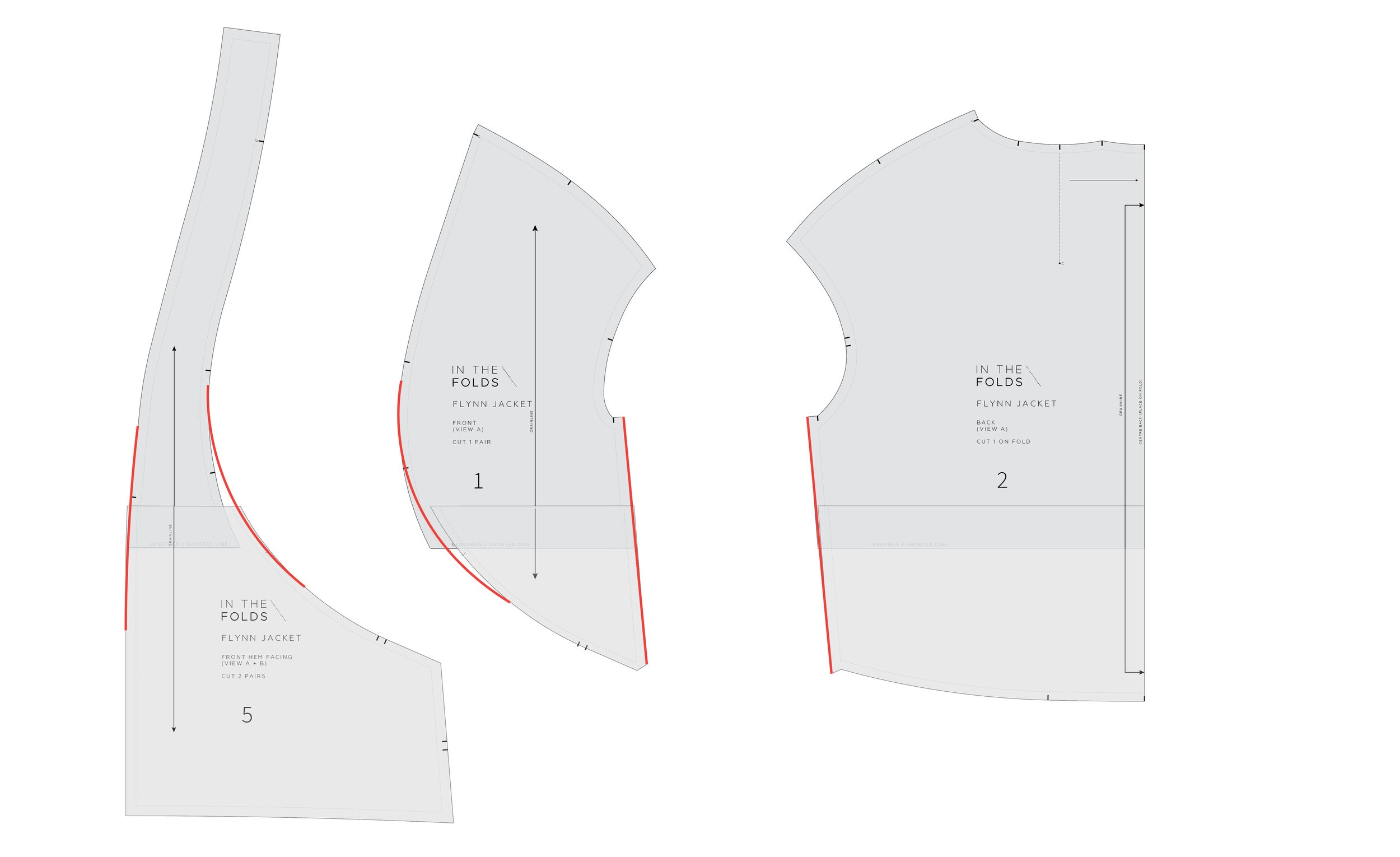The Flynn jacket is intended to have a substantial amount of design ease, to create an oversized shape, designed for layering. For this reason, I suggest focusing on your high bust measurement when selecting your size. The size chart for the Flynn jacket can be found here.
This pattern is drafted for a B cup bust. Due to the large amount of ease, it is unlikely you will need to do a full bust adjustment (or small bust adjustment) for View A. Check the finished garment measurements to ensure it will fit through the waist and hip.
For View B, which is closer fitting, due to its sleeveless nature, you may consider this alteration to achieve a better fit through the shoulders and armhole (and also so you can close it, if you would like to add a hook and eye). For today’s post, I will get you started for doing the adjustment and then will link to a past post that I wrote about full bust adjustments.
WHEN YOU'LL NEED TO DO A FULL BUST ADJUSTMENT
Most indie pattern companies (including In the Folds) draft for a B cup bust. There are of course exceptions to this rule (such as Cashmerette and Colette Patterns), so make sure you check on your pattern before assuming the bust cup size.
In terms of the Flynn jacket, it is a loose style which means it is a little more forgiving than more fitted patterns (such as the Acton, for example) so in some cases you can probably get away with not making a bust adjustment. For example, if your bust is smaller than a B cup, it is unlikely you need to bother doing a Small Bust Adjustment. I have an A cup bust, but have not made adjustments to any of my Flynn jackets. Also if your bust is just slightly bigger than a B cup, it is also likely you will be okay without the adjustment.
Check the finished garment measurements and go from there.
WORK OUT YOUR CUP SIZE
Your cup size in sewing patterns may not always correspond to the bra size you wear. To be safe, check your measurements before deciding if you need to make any adjustments to the pattern.
To do this, measure your high bust measurement (the area above your breasts, under your arms) as well as your full bust (the fullest part of your chest) and then take note of each measurement, as well as the difference.
If the difference is 2.5cm (1") your bust is an A cup, 5cm (2") it's a B cup, 7.5cm (3") is a C cup and so on.
CHOOSE YOUR SIZE
Now, go back to your high bust measurement and add 5cm (2"). This is what your bust measurement would be if you were a B cup and therefore the size you should be choosing from the pattern.
For example, let's say your upper bust measures 81cm (32"). Add 5cm (2") to this measurement to find out what size your bust measurement falls into on the In the Folds sizing chart (and what size you would be if you had B cup breasts). 81cm + 5cm = 86cm which corresponds to a size C. Your actual bust measurement is 89cm though - 3cm (1") larger than the cup size of the pattern. This means you need to do a FBA and add this 3cm (1") to your pattern.
As the front pieces are cut as a pair, you need to take the measurement you will be adding and divide it by two. For example, this 3cm (just over 1") mentioned in the example, will be split between either side of the front - 1.5cm (1/2") on each side.



















































